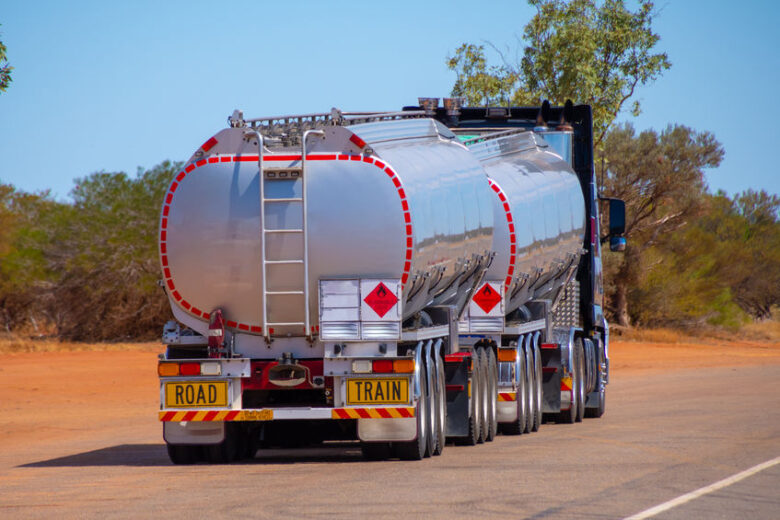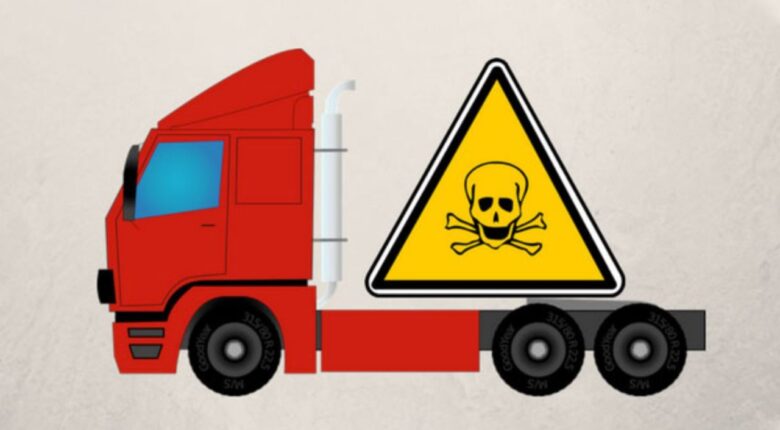Transporting dangerous goods is a complex and challenging task that requires careful planning, preparation, and execution to ensure the safety of everyone involved. Dangerous goods can be explosive, flammable, toxic, or otherwise hazardous and pose significant risks to the environment, people, and property if improperly handled and transported. This article will discuss the best practices for handling and transporting dangerous goods, including safety measures, regulations, and training programs.
Safety Measures for Handling and Transporting Dangerous Goods

Source: timocom.co.uk
Handling and transporting dangerous goods can be a challenging and potentially dangerous task. Whether you are dealing with hazardous chemicals, flammable materials, or explosive substances, it is crucial to take appropriate safety measures to protect yourself and others from harm. This article will explore some of the essential safety measures that should be followed when handling and transporting dangerous goods.
Identify the Hazards
The first step in handling and transporting dangerous goods is to identify the hazards associated with the materials you are dealing with. This can be done by consulting the Material Safety Data Sheet (MSDS) for the substance in question. The MSDS will provide information on the substance’s hazards, handling procedures, and emergency response measures.
Use Appropriate Personal Protective Equipment (PPE)
Personal protective equipment (PPE) is essential when handling and transporting dangerous goods. The type of PPE required will depend on the nature of the substance and the hazards involved. At a minimum, PPE should include gloves, eye protection, and respiratory protection. Other types of PPE, such as chemical-resistant suits, may also be required.
Proper Storage
Storing dangerous goods is critical to ensuring their safe handling and transportation. The storage area should be well-ventilated, away from sources of heat or flame, and properly labeled to indicate the contents. Dangerous goods should be stored in containers that are designed for the specific substance, and these containers should be properly sealed and labeled.
Safe Transportation

Source: safework.sa.gov.au
When transporting dangerous goods, it is essential to use appropriate transportation methods and equipment. The transport vehicle should be properly marked and labeled, and the driver should be trained to handle dangerous goods safely. The vehicle should have appropriate safety equipment, such as spill kits, fire extinguishers, and emergency eye wash stations.
Emergency Response
Even with the most rigorous safety measures in place, accidents can still happen when handling and transporting dangerous goods. It is essential to have an emergency response plan in place to deal with any accidents or spills. This plan should include procedures for containing the spill, notifying emergency services, and evacuating the area if necessary.
Communication
Effective communication is critical when handling and transporting dangerous goods. All personnel involved in the process should be aware of the hazards, and there should be clear lines of communication between them. This can be achieved through the use of safety briefings, standardized procedures, and clear labeling and marking of containers.Risk Assessment
Before handling or transporting dangerous goods, it is essential to conduct a risk assessment. This assessment should identify potential hazards and evaluate the risks associated with handling materials. This can help to identify potential problems and develop appropriate safety measures to address them.
Regulatory Compliance
Handling and transporting dangerous goods are subject to various regulations and guidelines. It is essential to ensure compliance with these regulations to avoid potential legal issues and ensure the safety of all personnel involved. Compliance requirements may include properly labeling and marking containers, obtaining necessary permits, and following appropriate transportation procedures.
Regular Inspections
Regular inspections of containers, vehicles, and equipment used for handling and transporting dangerous goods are essential to ensure their safety and effectiveness. Inspections should include checks for damage, leaks, and other signs of wear and tear. Any issues should be addressed immediately to prevent accidents and ensure safe transportation.
Training Programs for Handling and Transporting Dangerous Goods

Source: altrainadr.com
Anyone who handles or transports dangerous goods should receive proper training and certification. This training should include information on the hazards of the materials being handled, as well as safe handling and transportation practices. It is essential to ensure that all personnel involved in handling and transporting dangerous goods have the necessary knowledge and skills to do so safely. With canadasafetytraining.com, you can be confident that you receive high-quality training that meets the industry’s standards and requirements.
- Classification of Dangerous Goods: Personnel must be trained to identify the types of dangerous goods and their associated hazards.
- Packaging and Labeling: Personnel must be trained on how to package and label dangerous goods to ensure safe transport properly.
- Handling Procedures: Personnel must be trained on handling dangerous goods safely, including using protective equipment and tools.
- Emergency Response: Personnel must be trained on emergency response procedures in case of accidents or spills.
Regulations for Handling and Transporting Dangerous Goods

Source: linkedin.com
Governments and international organizations have set regulations and guidelines to ensure the safe handling and transportation of dangerous goods. Some of these regulations include:
- UN Recommendations on the Transport of Dangerous Goods: The United Nations has developed a system of classification, packaging, and labeling of dangerous goods for transport by road, rail, sea, and air.
- International Maritime Dangerous Goods Code (IMDG Code): The IMDG Code provides safety guidelines and procedures for safely transporting dangerous goods by sea.
- International Civil Aviation Organization (ICAO) Technical Instructions for the Safe Transport of Dangerous Goods by Air: The ICAO provides guidelines for safely transporting dangerous goods by air.
- Dangerous Goods Regulations (DGR): The DGR provides a comprehensive set of guidelines for safely transporting dangerous goods by air.
Frequently Asked Questions (FAQs)

Source: greengeeks.com
Q: What is a dangerous good?
A: A dangerous good is any substance or material that can pose a risk to people, property, or the environment.
Q: What are some examples of dangerous goods?
A: Examples of dangerous goods include explosives, flammable liquids, gases, toxins, infectious substances, and radioactive materials.
Q: Who is responsible for the safe transport of dangerous goods?
A: The shipper, carrier, and consignee are responsible for safely transporting dangerous goods.
Q: What are the consequences of not following the regulations for transporting dangerous goods?
A: Not following the regulations for transporting dangerous goods can lead to accidents, injuries, and environmental damage and can result in fines and legal action.
Conclusion
By following the best practices for handling and transporting dangerous goods, organizations can minimize the risks and ensure safe transport of hazardous substances. Adhering to regulations, conducting risk assessments, planning emergency responses, and investing in training and technology are critical steps toward ensuring the safe transportation of dangerous goods.
